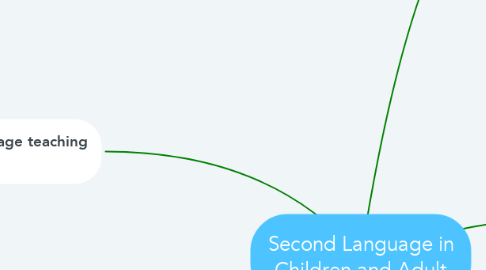
1. dialogue and action materials
2. second language teaching methods
2.1. characterizing the essentials of methods
2.1.1. language focus: speech communication vs literature
2.1.2. grammar learning : induction vs explication
3. Traditional method
3.1. grammar translation method
3.1.1. advantages of GT
3.1.1.1. non fluent teachers can teach large classes
3.1.1.2. self study is possible
3.1.1.3. adapts to changing linguistic and psychological theories
3.1.2. when GT fails
3.1.2.1. unable to comprehend or utter sentences at a level that allows them to engage in even simple conversations
3.1.2.2. GT cannot be used with young children
3.2. the natural method
3.2.1. advantages of NM
3.2.1.1. Exposure to natural language in a natural context
3.2.1.2. learners could acquire a speech capability both in understanding and production
3.2.2. problems of NM
3.2.2.1. class size
3.2.2.2. teacher must create interesting situations
3.3. the direct method
3.4. the audiolingual method
4. offbeat methods appear then disappear
4.1. cognitive code
4.2. community language learning
4.3. silent way
4.4. suggestopedia
5. younger children
5.1. high on natural situation
5.2. high on inductive
5.3. low on explicative
6. Psychological
6.1. intellectual processing
6.1.1. explication
6.1.2. induction
6.2. memory
6.2.1. Vocabulary learning and rote memory
6.2.2. syntax learning and episodic memory
6.2.3. children's memory ability
6.3. motor skills
6.3.1. articulators of speech
6.3.2. decline in general motor skills
6.3.3. decline in ability for new articulations
6.4. Motivation
6.5. Attitude
7. Social
7.1. The natural situation
7.1.1. who is better ?
7.1.1.1. adult
7.1.1.1.1. low on natural situation
7.1.1.1.2. older children
7.1.1.1.3. highs on both inductive and explicative intellectual learning
7.2. The classroom situation
7.2.1. know how to be student
7.2.1.1. younger children
7.2.1.1.1. young children classroom is not a simulation of the natural situation
7.2.2. who is better ?
7.2.2.1. adults
7.2.2.1.1. better in explicative processing
7.2.2.1.2. have cognitive experience lacking in small children
7.2.2.2. older children
7.2.2.2.1. memory better than adult's
7.2.2.2.2. motor skills better than adult's

